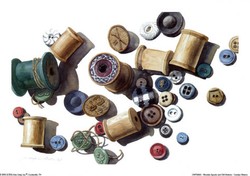How To Add Fractions
by CEdward
This is a guide showing you the simple steps involved in adding fractions both with and without like denominators.
Fractions quite simply are a way to represent a percentage. The top number is the numerator and the bottom is the denominator. The fraction, 3/8, is the same as saying 3 out of 8 or 37.5%. From this we can see that it is necessary for all fractions to be added to have the same denominator and to realize that when the fractions are added the denominator remains the same (the denominators do not get added together) and only the numerators are summed.
In a case where we adding fractions with like denominators the process is quite simple. For example, 3/8 + 4/8 = 7/8, here is our final fraction reduced fully.
In the case where you are adding fractions with different denominators, you need to do a little more work. You can equate these unlike denominators by reducing or simplifying the fractions, as follows, 3/4 + 4/8 = 3/4 + 2/4 = 5/4. In this case by inspection it can be seen that 4/8 easily reduces to 2/4, just dividing both the numerator and denominator by 2 this is accomplished. Note that when an operation is applied to the numerator it must also be applied to the denominator and vice versa.
You can also equate the denominators in your fractions by multiplying the numerator and denominator of the first fraction each by the denominator of the second fraction. You can then repeat this process for the numerator and denominator of the second fraction by multiplying each of them by the denominator of the first fraction. You will notice that this results in you having two new denominators that are the product of the two old denominators and exactly the same.
Let’s see an example of this. 3/7 + 5/9 = (3 x 9)/(7 x 9) + (5 x 7)/(9 x 7) = 27/63 +35/63 = 62/63. Notice how the multiplication of the each fraction (numerator and denominator) by the denominator of the other was the same as multiplying the fraction by 1 but just scaling the fraction up. This is perfectly acceptable as we perform the same operation for both the numerator and denominator. This process can also be used for more than two fractions at a time. If you are adding three fractions with different denominators, you would have the numerator and denominator of each fraction being multiplied by the denominator of each of the other two fractions. This would give new numerators for each of the three fractions that are each a product of three terms and the new denominators also as products of three terms. At this point the fractions would have like denominators and could easily be added.
When adding several fractions with unlike denominators, it’s best to use a combination of the two methods listed above for simplifying the fractions as applicable.
Related Articles from this author
You might also like
Buttons from the Rag Bag! Button Jar Math ActivitiesSave the buttons from discarded clothing and recycle them as fun, hands-on ma...


 How To Safely Secure Large Holiday Blow Molds From Wind Damageon 02/13/2012
How To Safely Secure Large Holiday Blow Molds From Wind Damageon 02/13/2012
 Tips On Protecting Your Holiday Blow Mold Decorations From Sun Damageon 02/08/2012
Tips On Protecting Your Holiday Blow Mold Decorations From Sun Damageon 02/08/2012

Comments